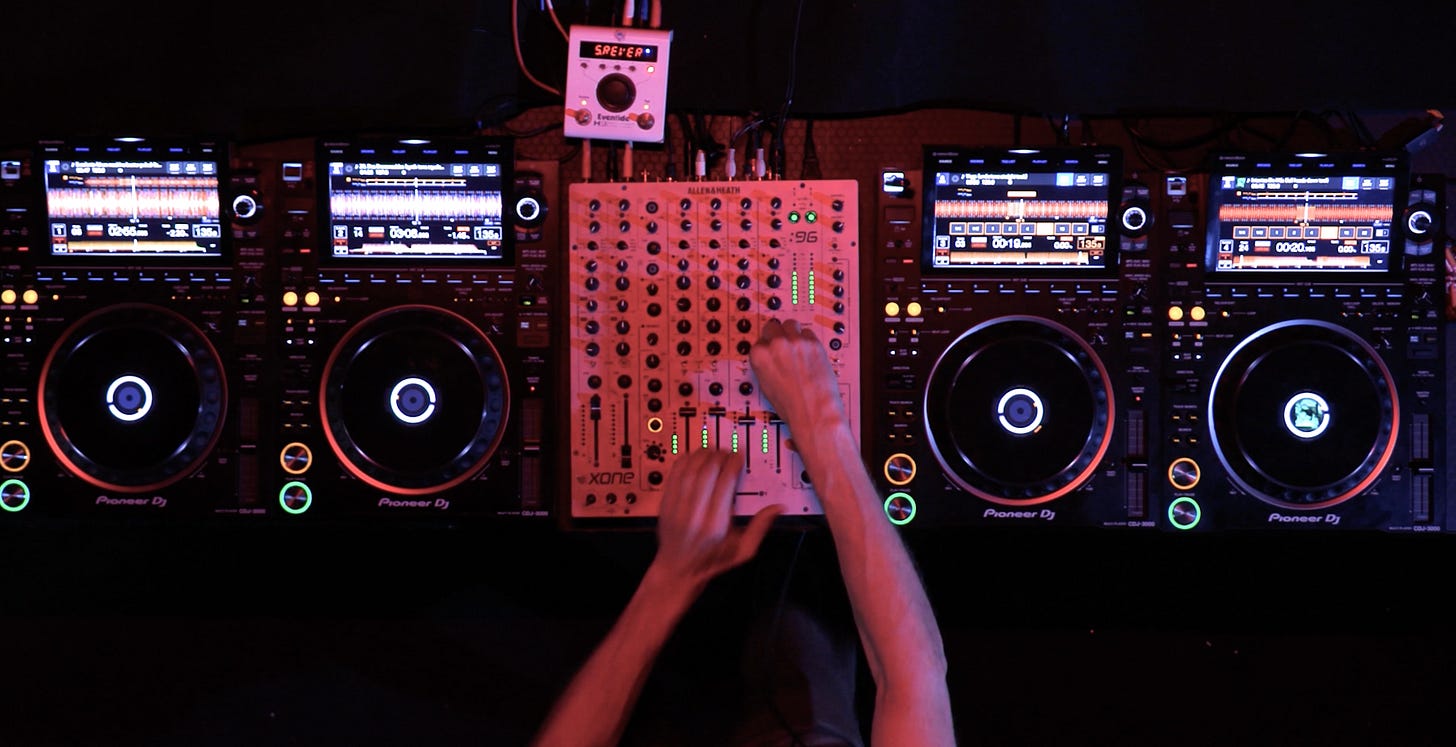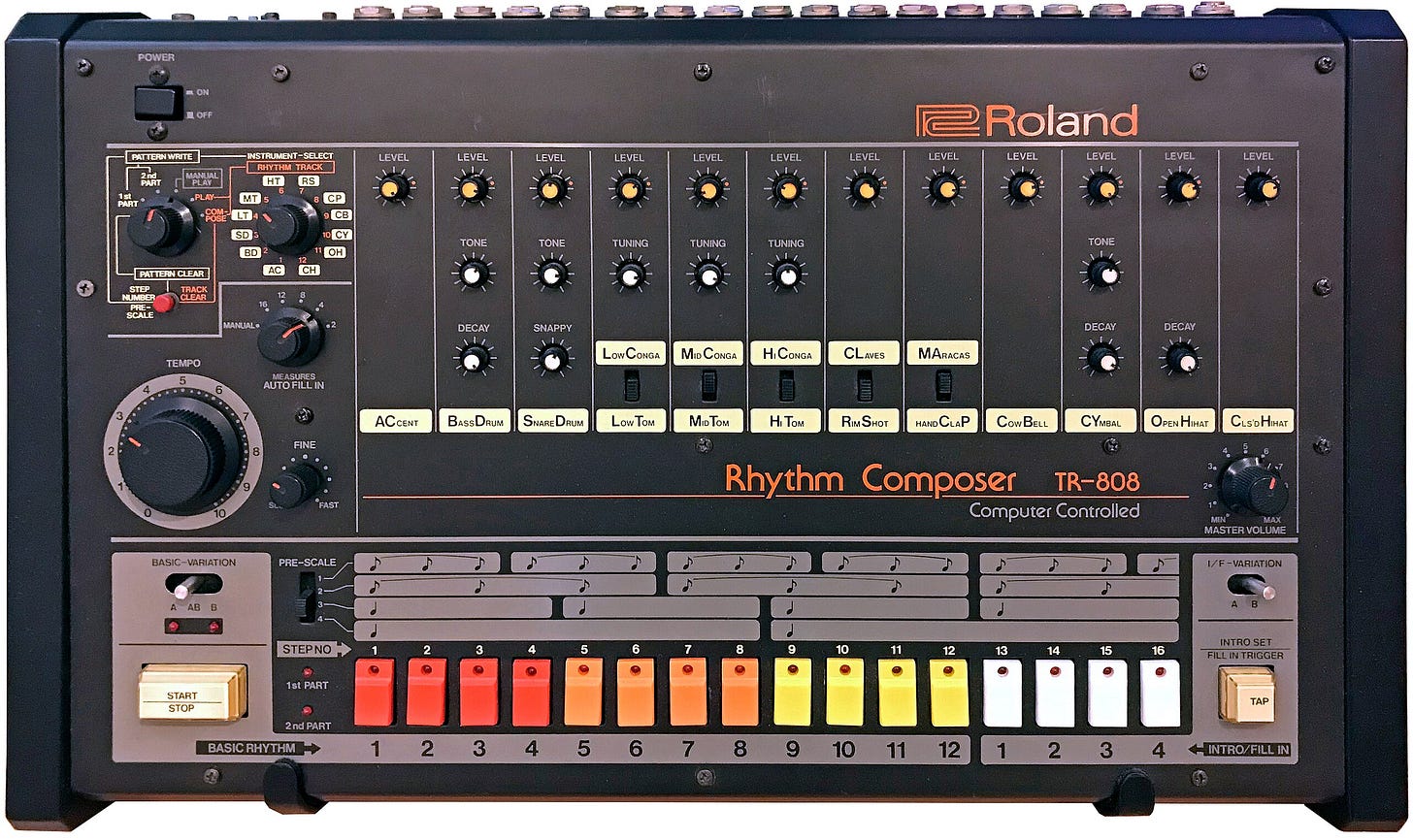Learning to DJ deepened my understanding of how dancefloors work
Understanding how dance music is put together and mixed made my dancefloor experiences richer. If you love dancing to modern dance music, learning to DJ will enrich your next visit to a dancefloor.
[This one’s a quick palate cleanser before I publish part six of the Berghain series.]
CBS News Los Angeles just featured Dance Music Initiative, the nonprofit that taught me to DJ. Here’s the video news report.
If you’re in the Los Angeles Metro area, I can’t recommend this team of teachers highly enough. They started me on vinyl mixing and beat-matching by ear, gave me hands-on lessons with a variety of newer and older DJ mixers, turntables, and CDJs (I learned on Allen & Heath and Pioneer DJ gear). The lessons are free, the teachers are all volunteers, and the guy in charge of it all runs an excellent operation.
The lessons allowed me to hear dance music more deeply when on dancefloors. Learning to DJ helped me learn the structure of music, from intro to outtro, including verse, chorus, bridges, breakdowns, and so on. Knowing this stuff allows me to identify when a new song is being brought in, and helps me unweave the tapestry that the DJ is weaving through their performance, which helps me understand when they’re performing a simple mix or performing with three or even four sliders up, as some of the masters often do.
I credit DJ lessons with helping me develop insight and clarity DVS1’s mixing style at his Wall of Sound event (which I wrote about here), producing what I think is the most accurate and in-depth write-ups of Wall of Sound ever published.

Why would I want to unmix the mix, or unweave the tapestry? It’s similar to what a food critic does when they identify specific flavors in a dish. Knowing what cumin tastes like, knowing when a Maillard reaction was in play after a sous vide, knowing that a sachet of herbs was involved in the making of a cassoulet, knowing the cooktime on diced vs. brunoise cut-vegetables … this all helps me understand the chef’s intent when they put together the mix of ingredients. It helps me understand where they’re adhering to formula vs. breaking from tradition. It helps me understand where they’re innovating and where they’re playing true to the classic flavor profiles. It’s about understanding the art, and understanding the art’s impact on me.
And there are so many layers to the understanding that’s available to us, if we’re willing to really dive into the richness and depth of how the music came together before it was played out on a dancefloor.
The DJ is at the end of a long chain of creatives: the artist who recorded the track, the recording engineer, the mastering engineer, the producer, the instrumentalists — all of these people touch a dish before a DJ plates it up for us. And in the effort of arranging a specific song for our consumption, they put their own spin on it. They’ll remove frequencies to make the flavors of the new dish meld more seamlessly into the prior course. Knowing what a high pass filter sounds like and how it’s used to heighten drama before a drop allows me, as a dancer, to wrap up one physical motion and prepare for another.
And of course dancing is about predicting — knowing that a given moment is going to last only 32 or 64 beats allows my brain to tell my body when to get into position for a completely different set of movements. Almost nothing matches the satisfaction I get from accurately predicting a phrase change and marrying to it a motion that complements the change-up — for example, moving into bigger hip and leg motions for a transition to a heavy beat, or moving from rhythm-centric dance into motion that’s tied to melody or to vocals.
DJ lessons deeply improved my ability to *hear* music, and when I hear music better, I dance to it better. Not just mechanically better, but in a more emotionally resonant way, in a more satisfying way, in a more connected and human way.
And when the DJ does a bad job, or the soundsystem has failed us (as with Quasar, recently) I understand why and how the dancefloor just broke.
In the earliest days of dance, we sat around a campfire and could observe Krrk’s hand claps and Grok’s stick hitting the hollow log. We had a direct connection to the artists and performers. As time unfolded our distance from the source of sound grew and this wasn’t necessarily a bad thing. Music became more sophisticated.
Layers of culture built up over the eons, and music co-evolved with human technologies, from architecture (reverb!) to money (the 78-RPM-length single for commercial radio!) and being able to unpack a song from many different lenses gives us a heart, body, and head high as we dance to it. We understand the references to the references, we build an intuitive understanding of the mood of a minor chord vs. a major chord, and we dance it out.
Anybody who’s been around long enough knows how music sounded when Moog Minimoogs and Linn drums and Roland 808s were the new sound. We remember the Roland TB-303 started squelching out the iconic sound of Acid House and understood in our heads that something new had begun, and translated that newness into different styles of movement on the dancefloor.
All of my (self taught) music education has made me a better dancer and a more perceptive observer of dancefloors. And learning to DJ is one of the four key pillars of my education, the other three being reading about music, writing about music and dance, and actually getting out there and dancing regularly — especially in the presence of great selectors playing on great soundsystems to great crowds. I’m now working on fifth and sixth pillars: playing music (as a DJ) and creating music (as a producer) to deepen my understanding of how dancefloor magic is built, note by note.






